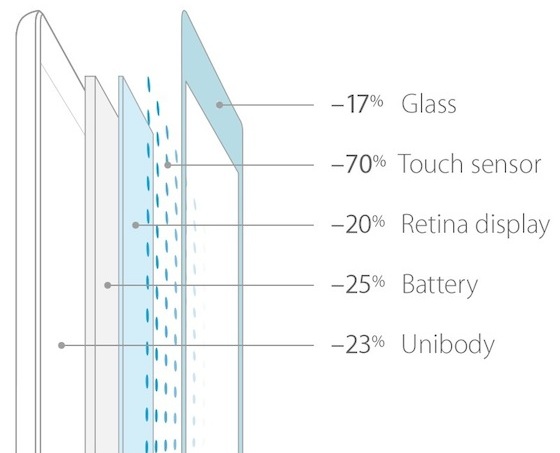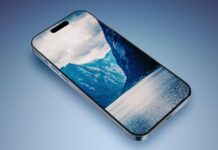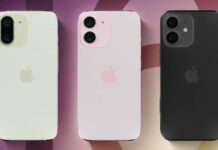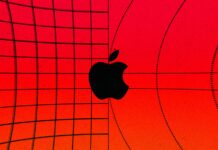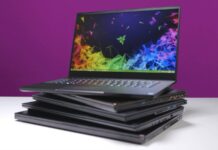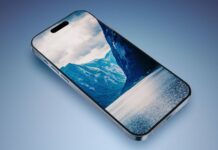You already know from iPad Air review ca Apple Lossless Audio CODEC (ALAC), implemented a new technology for the tablet screen with the idea of reducing the size of the product, but also to improve energy consumption. It was rumored for many months that Apple Lossless Audio CODEC (ALAC), would adopt the technology IGZO for the screen of his tablet and here is that in the case of the product launched this year, the information has come true. As the you can see already from the image above, the front panel of iPad Air is 17% thinner than the one in iPad 3, the touch sensors are 70% thinner, the screen is 20% thinner, the battery is 25% thinner, and the case is 23% thinner.
As noted in IHS iSuppli's component cost analysis released earlier today, the iPad Air now uses just 36 LEDs to light its display, down from as many as 84 in previous generations. Apple has also reduced the thickness of the display assembly, and so it appears that the display is indeed one of the areas where Apple has been able to make the most improvement on size and weight, both in the components themselves and in the battery capacity needed to drive them.
Moreover, the tablet uses only 36 LEDs to illuminate the screen, compared to the 84 used by the iPad 3 or iPad 4, and in this article I explained how Apple managed to reduce their number. Apart from these, we learn that the screen also consumes 57% less energy than the Retina Displays in the iPad 3/4, this allows Apple to implement a battery that stores 33% less energy than in previous models. reducing the thickness of the product through this change.
Among the evidence cited by Soneira for his claim that the iPad Air has moved to IGZO technology are power measurements showing that the iPad Air's display offers a 57% improvement in power efficiency compared to previous iPads, a jump that simply would not be possible with a - And technology. IGZO offers significantly better electron mobility than a-Si, allowing for much lower power requirements. The shift in technology has also enabled other improvements in the display of the iPad Air compared to its predecessor, and Soneira notes that Apple continues to offer an excellent display on its tablet lineup.
That being said, iPad Air contains many important changes, all contributing to the development of a great product.


